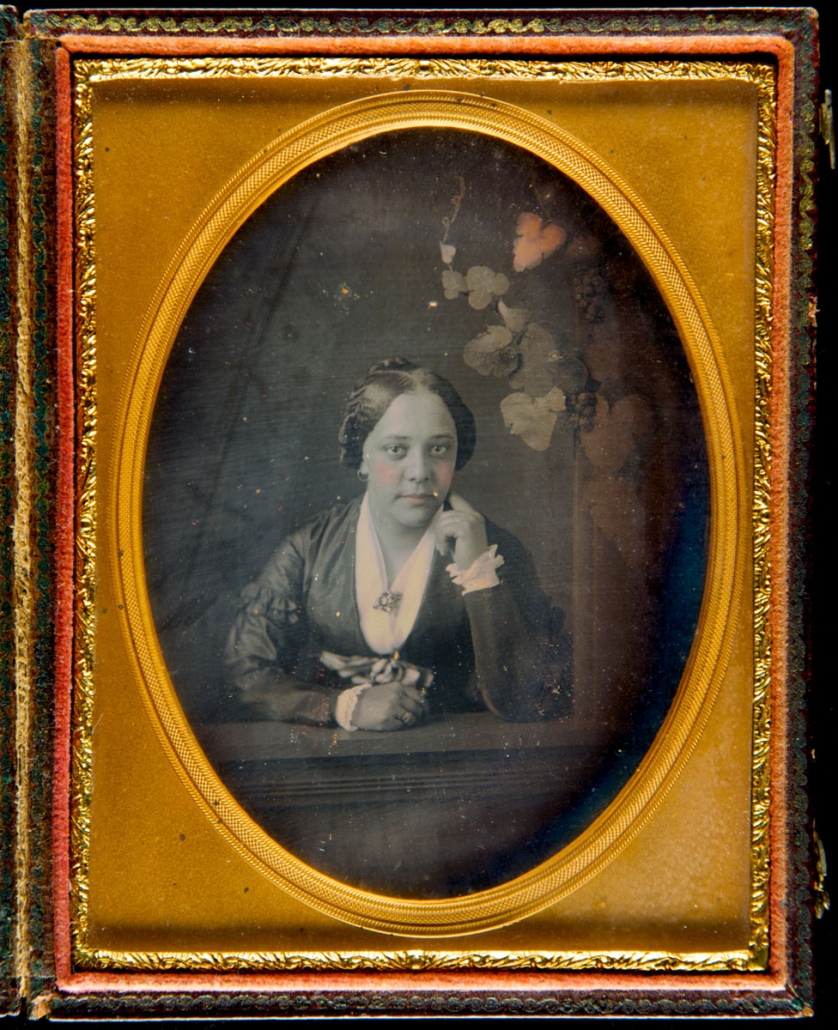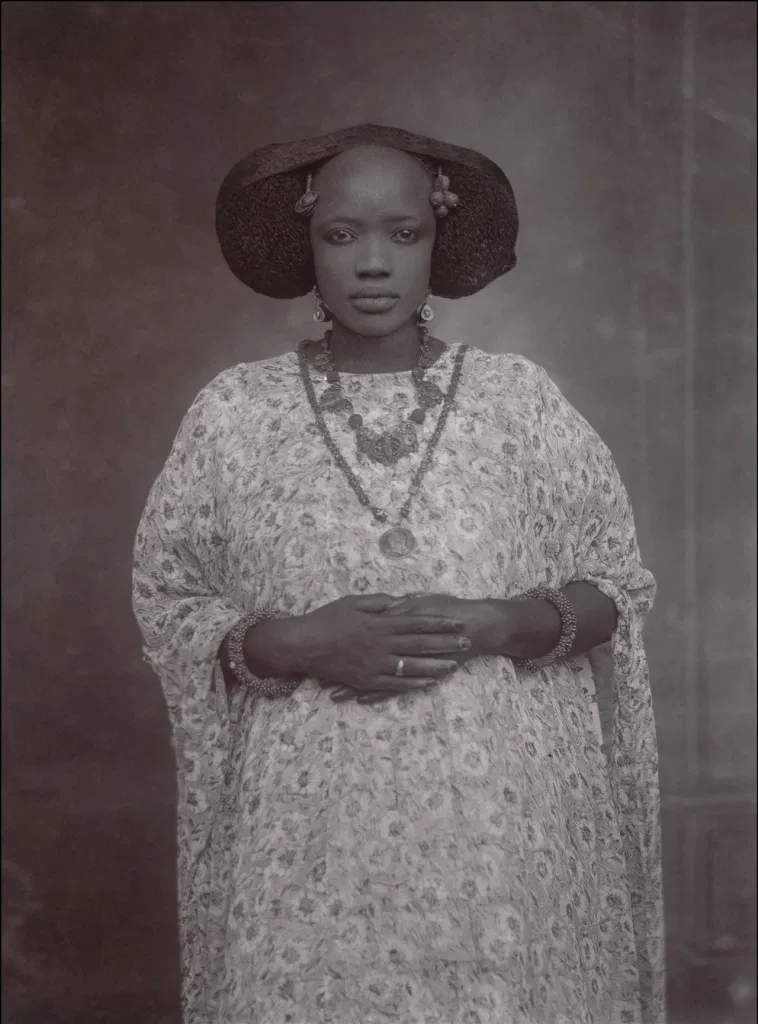[Portrait of an Unidentified African American Woman].
Joy O. Ude, Art teacher, Howry STEAM Academy

Examined only digital image.
Broadbent, Samuel, 1810-1880, photographer.
[Portrait of an Unidentified African American woman].
Philadelphia, ca. 1850.
Daguerreotype.
Dickerson family.
Part of Dickerson Family Collection and the Library’s African American History Graphics Collection.
Cased photos [P.9427.13]
Keywords/Subject heading: Portrait; Daguerreotype; Her gaze.
Description:
Her gaze. As I take in all the detail of this framed daguerreotype, I return to the transfixing gaze of this unnamed woman. Perhaps pensive, but definitely direct. Unwavering. Stately. Is her stare challenging? Is it coy? I can imagine the many stories that could develop from a single look.
I see in this image a version of the photos my grandmothers, aunts, and mother sat for many times in Nigeria. Striking black and white images, the standard style of West African photo portraits. The daguerreotype precedes the West African portraits, but the effect is the same across decades. In each photo, a confident gaze leveled at the camera. For each woman, a multitude of experiences leading up to a moment captured in time.
There is so much other detail to take in. Her hair, like a crown, framing her face. The ruching and ruffles of her dress and blouse, the collar clasped with a jeweled brooch. The rosy, hand-colored blush in her cheeks added post exposure. The case is well-preserved: a gold-colored mat, framed in various textures of gold, red, and green lines. And yet, I always return to her gaze.
This photo is not of a Black woman portrayed in the typical racist tropes of the time. Not one of the caricatures widely circulated and propagated in advertisements for generations and, in some form, still to this day. Not the mammy, the jezebel, or the sapphire. Instead, I see the portrait of a woman who is poised and proud. A historical photo seldom seen in history books, one that does not focus on emancipated slaves or nursemaids. I see a woman that demands your undivided attention and wills you to see her. How could such dignity go undocumented in text? What is her story?
Mom in Abiriba, c. 1970. Courtesy of Ms. Arit P. Eke-Ude.
Unknown artist (Senegal)
“Portrait of a Woman” (c. 1910)
Glass negative
6 x 4 in (16.5 x 11.4 cm)
Gift of Susan Mullin Vogel, 2015 (image courtesy the Metropolitan Museum of Art)
Works Cited
Friedman, Julia. “Illuminating the History of West African Portrait Photography,” December 24, 2015. https://hyperallergic.com/262582/illuminating-the-history-of-west-african-portrait-photography/.


